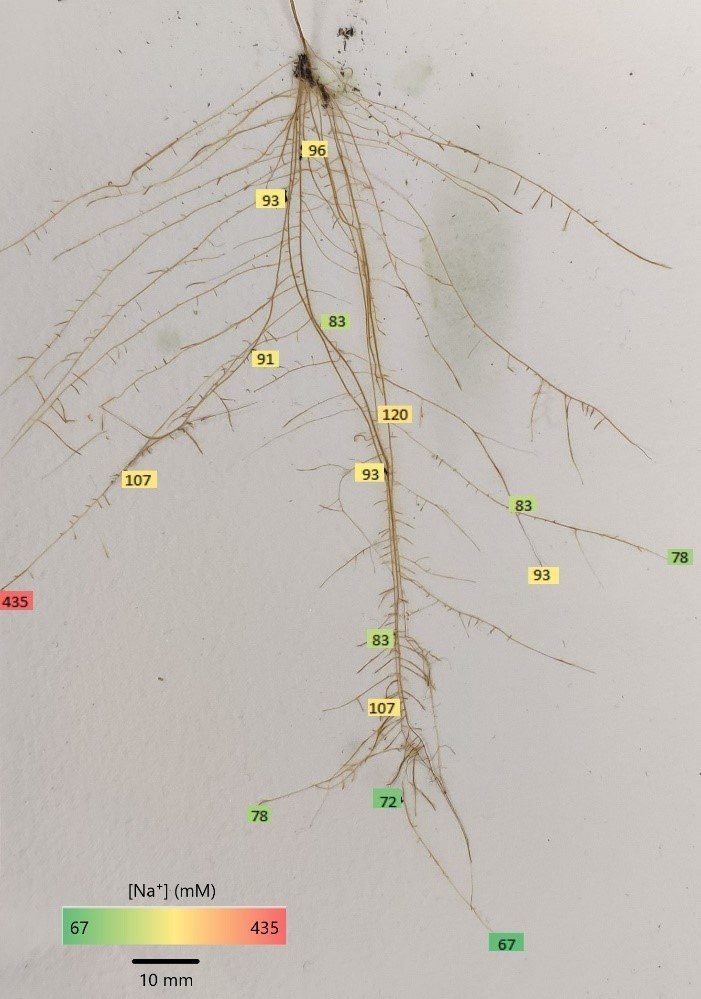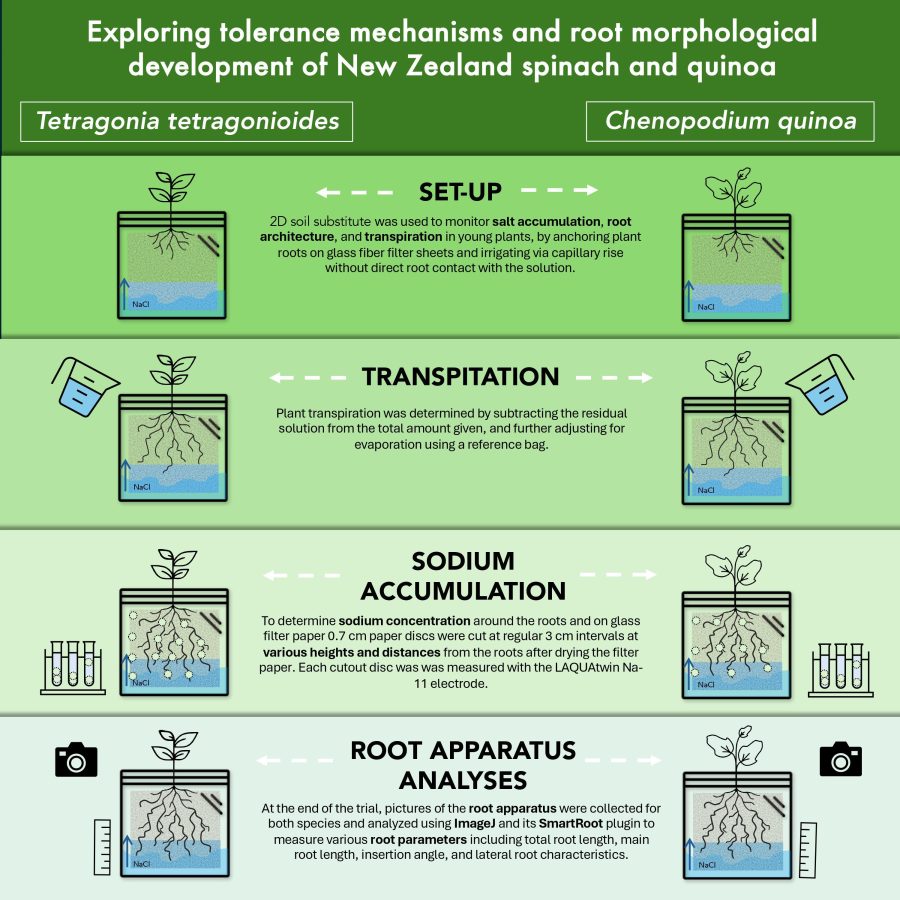Publication Exploring tolerance mechanisms and root morphological development of New Zealand spinach and quinoa across salinity levels


Soil salinity, root sodium concentration, and transpiration rate are important environmental factors impacting plant growth and productivity. This study investigates the salt-coping strategies of two plant species under varying salinity levels: New Zealand spinach species grown at three salinity levels (i.e., 0, 100, and 200 mM NaCl) and three varieties of quinoa, i.e., “Vikinga”, “Dave 407” and “Red Head”, grown with or without salt (i.e., 0 and 100 mM NaCl). The plants were grown on glass fiber sheets (rhizoslides) under controlled laboratory conditions. The relationship between transpiration rate, salinity, and root architecture was analyzed for each species. The root apparatus of New Zealand spinach was significantly more developed in plants grown at 100 mM NaCl compared to both 200 mM NaCl and control. The quinoa varieties responded differently to the increasing salt concentrations, with salt-treated “Red Head” plants significantly reducing their total root length and salt-treated “Vikinga” significantly reducing its lateral roots compared to the controls. Salt concentration near New Zealand spinach roots was lower compared to areas without roots, suggesting active salt uptake. In contrast, quinoa rhizoslides exhibited higher salt concentration in proximity to the roots, indicative of salt exclusion. The study provides insights into the adaptation and tolerance mechanisms of these two species to salinity, elucidating the mechanisms by which plants regulate their sodium uptake and root growth. The obtained results suggest that not only the selection of appropriate plant species (halophytes), but also varieties, plays a crucial role in improving crop productivity in salt-affected areas. Elucidating the salt-coping mechanisms of halophytes in relation to soil and climatic conditions is important to better predict their behavior in various saline environments.
 saline agriculture
saline agriculture